You Can Go Home Again | Kurt Vonnegut’s Cape Cod Home Tour
Edie Vonnegut and her husband, John Squibb, combined art, practicality, and frugality to make the Cape Cod barn of her childhood into their own home.
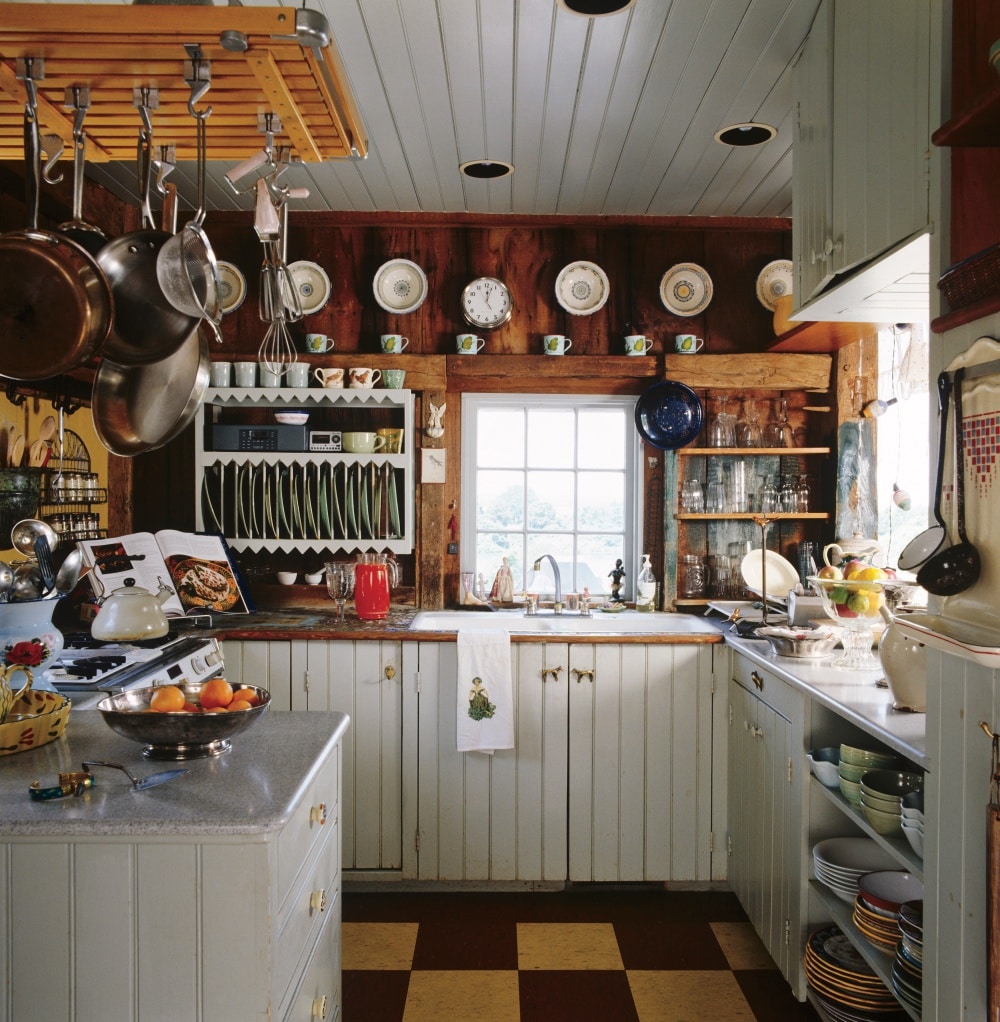
Edie and John’s kitchen is festooned with vintage utensils and ceramics bought at yard sales and Salvation Army stores.
Photo Credit : Nat Rea
Photo Credit : Nat Rea
Let’s go back–say, 25 years. Before those lazy Sunday afternoons on the pond out back. Before those gorgeous mornings in the great room with all that sunshine pouring through. Before the yard-sale hunts to find another treasure. Certainly before kids. And long before the dream was ever realized: the dream of turning a dilapidated barn on the northern edge of the mid-Cape into a cozy home.
Where do we end up? A point in time that seems improbable now: at a moment when Edith Vonnegut (called Edie) believed that there was no way she could ever move back to her hometown of Barnstable, Massachusetts–not after leaving the Cape at age 17, traipsing around the world, before settling again in New York. For 15 years she called the city home. She built her career as a painter, found love, and eventually married a childhood friend.

Photo Credit : Nat Rea
And then the story takes a turn. It was her husband, John Squibb, who’d suggested the move. He was a builder. Like her, he’d grown up in New England. And also like his wife, he wanted a family, but not in the tight confines of New York. There was a barn at Edie’s mother’s place. It needed a lot of work, but he could fix it up. He could make it their home. But Edie was reluctant to leave a city she loved for a place that was just a little too familiar. “It was the last thing I wanted to do,” she says now, laughing. “There are neighbors who still remember me as a kid running naked down the street.”
Edie Vonnegut had moved to Cape Cod with her family at the age of 2, the youngest of a small contingent of Vonneguts arriving from Schenectady, New York, in 1952. Her family had vacationed in Provincetown the year before, and it was then that her father, the writer Kurt Vonnegut–who was still years away from literary fame–fell in love with the area and realized that he was never going to be happy with his 9-to-5 life in public relations at General Electric. He wanted to write, and he wanted to be close to the sea. So, with little money, he and his wife, Jane, and their children moved first to Osterville and then, after a couple of years, settled in Barnstable, into a rambling place that featured fantastic sunsets, a pleasant backyard that tumbled down to a pond, and a tired-looking barn.

Photo Credit : Courtesy Edie Vonnegut
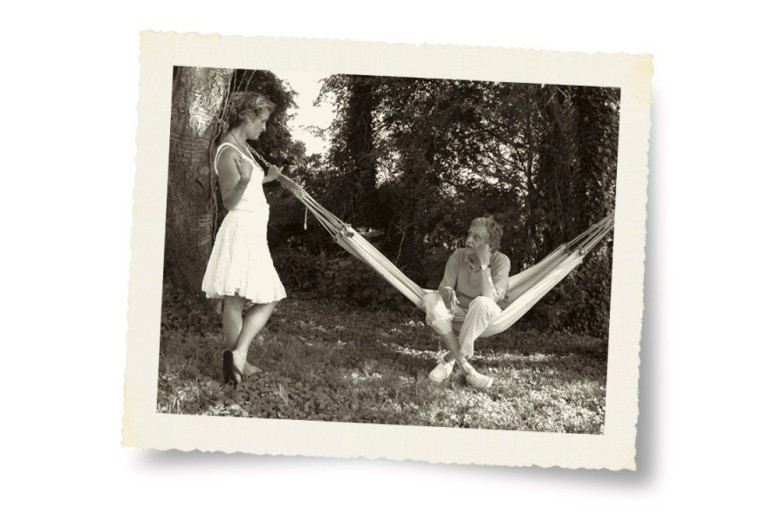
Photo Credit : Courtesy Edie Vonnegut
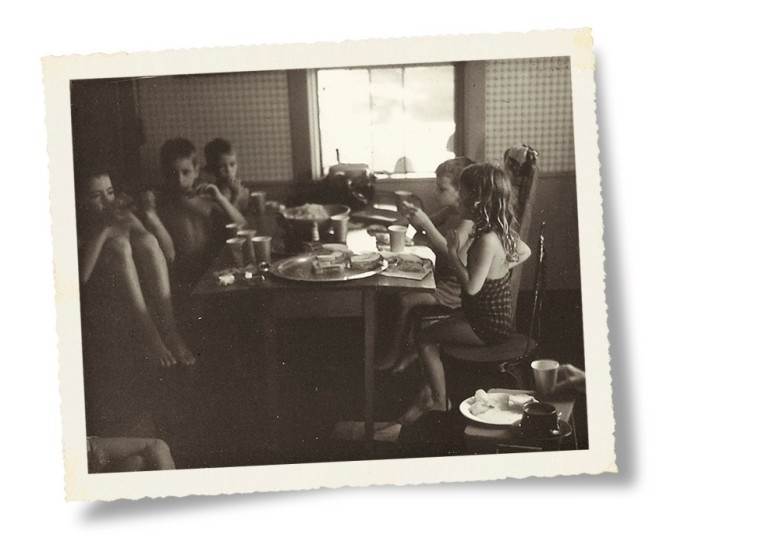
Photo Credit : Courtesy Edie Vonnegut
It’s here that Edie’s dad wrote some of his most celebrated titles–Cat’s Cradle and Slaughterhouse Five among them. It’s also here, in small-town Barnstable, that the Vonnegut home, which included three nephews that Kurt and his wife adopted, was a swirl of activity. In the barn especially: parties and concerts, unplanned jam sessions, and random get-togethers. “It was the ’60s,” Edie says. “People would come for five minutes and stay a week.” A lot of socializing but not a lot of upkeep. By the time Edie and John returned to the Cape in 1985 (her parents had divorced, with Edie’s mother remaining in Barnstable), swallows had moved into the drafty structure, the basement had flooded, and the barn had no heating.
To make it their home, John and Edie wanted to renovate the building without sacrificing any of its barn character. That meant learning to embrace its age and imperfections. “This floor,” John says, standing in the middle of the barn’s main room, “pitches four inches. So be it.” The wide wall boards, the oil-stained floor planks, and the old hand-hewn beams were not only to be retained but showcased, easy shortcuts be damned. To insulate their home, John got creative and built out instead of in, constructing bays on the barn’s exterior. He filled them with 2-inch rigid insulation and capped them with plywood, then re-sided the entire barn.

Photo Credit : Nat Rea
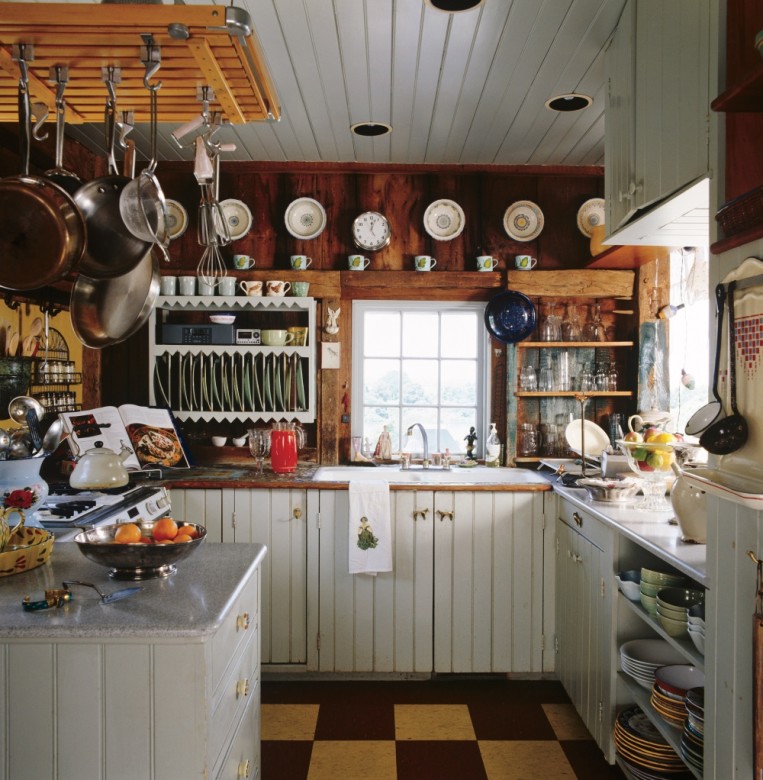
Photo Credit : Nat Rea
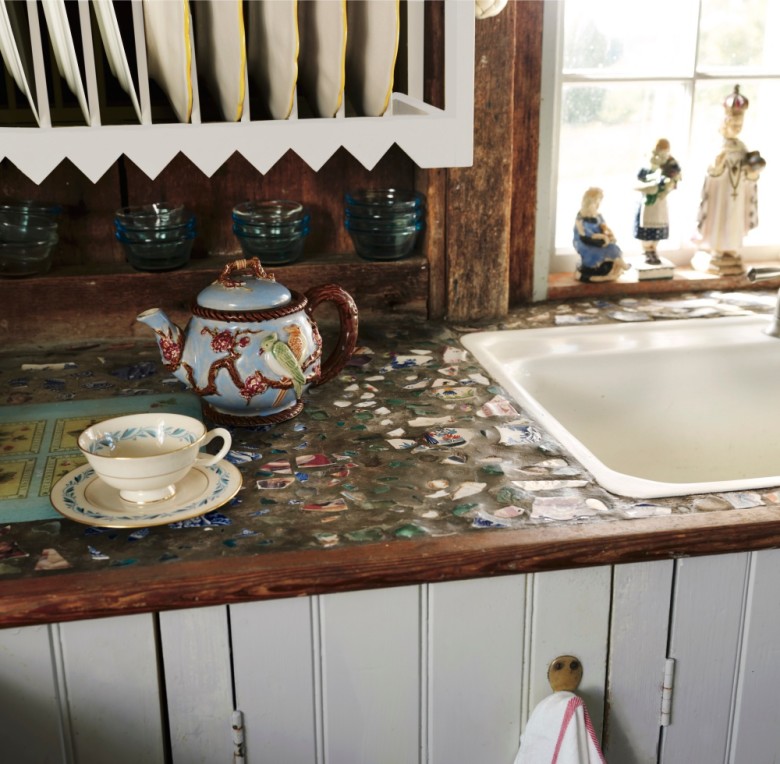
Photo Credit : Nat Rea
The lofts remain, too, though not without modification. The second level eventually became bedrooms for Edie and John’s two boys–Willy and his younger brother, Buck. In one of them, John got around the small dimensions and lack of window space by adding a long, rectangular skylight running down the slanted roof. The home’s third floor received an even bigger facelift. What had been nothing more than a series of rafters with a single board to scamper across is now a spacious, light-filled master bedroom, including an added dormer with big windows and a lush view of the backyard and pond. John’s handiwork extends to the restored cupola that peers down from the peak of the roof right above, and the L-shaped half-bath he built when Edie became pregnant with Buck, so that she wouldn’t have to manage the home’s two flights of stairs any more than she needed to.
But it’s not just about additions and updates. This barn is a showcase of the saved. Except for the appliances, nothing is new here. “When we go to the recycling center,” Edie says, “I instruct John to drive slowly by the metal pile.”
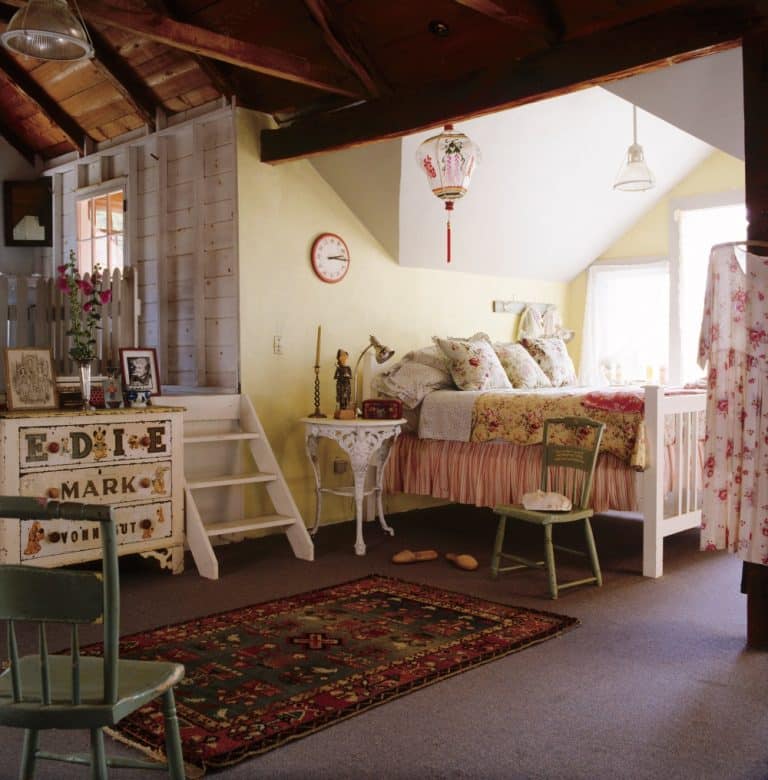
Photo Credit : Nat Rea

Photo Credit : Nat Rea
The half-bath John built includes a large sketch of an angel that Edie made as a child on an old plaster wall on the barn’s main floor. John cut it out, hauled it upstairs, and fitted it into the new wall beside the sink. Downstairs, the kitchen counter is a collection of grouted-in pieces of broken plates, while in the great room, an old candle chandelier is lowered and raised by a pulley attached to a large beam. Old books are stacked to create a table; the big stone fireplace is made from rocks that Edie and John unearthed from a nearby bay. A pair of columns rescued from a demolished Boston home fill out the great room’s decor. Couches, guest beds, and other furnishings are all yard-sale finds.
Edie’s art, of course, is a big part of the décor, too. Her studio is here, and her paintings–glorified depictions of women and their domestic work–is a reflection of her embrace of her post-New York life: of being a mother, a housekeeper, a homebody. Like Kurt, Edie Vonnegut has found her voice and home in Barnstable.
“It’s a magical area,” she says. “It’s a place that knew my dad just as this weird guy who didn’t go to work. It’s isolated and maybe not the hippest town, but I really like it.”

Photo Credit : Nat Rea
Ian Aldrich
Ian Aldrich is the Senior Features Editor at Yankee magazine, where he has worked for more for nearly two decades. As the magazine’s staff feature writer, he writes stories that delve deep into issues facing communities throughout New England. In 2019 he received gold in the reporting category at the annual City-Regional Magazine conference for his story on New England’s opioid crisis. Ian’s work has been recognized by both the Best American Sports and Best American Travel Writing anthologies. He lives with his family in Dublin, New Hampshire.
More by Ian Aldrich

